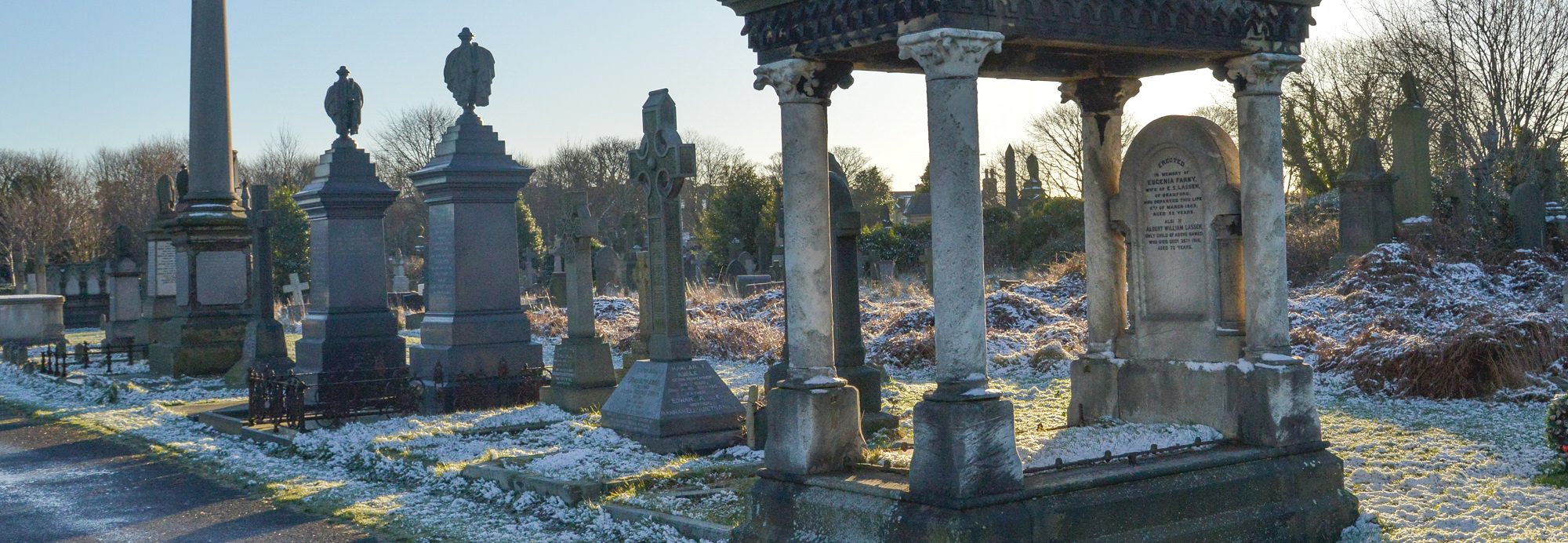Education and Community
Undercliffe Cemetery provides a unique opportunity to discover the rich history of Bradford and its people, particularly that of the Victorian period, when the borough grew exponentially through the woollen industry. Within its 26-acre site is a wealth of material which can be applied across the National Curriculum and all Key Stages.
Guided or self-guided tours
We can offer guided tours for school groups, tailored to specific teaching needs, with archive and study materials available. Much of our site is wheelchair accessible, as are our study room and toilets.
The Cemetery’s vast range of accessible monuments, memorials and statuary also gives students the opportunity to develop research and study skills, and to interpret the data and stories they gather from the headstones.
Research
Our records of burials, kept since the very first interment in 1854, are a valuable and important archive for the serious scholar, historian, or family history researcher.
Environment
In addition to local history appreciation, the green spaces, trees and shrubs (many of which were planted when the Cemetery was conceived as a park for Victorians to enjoy) provide a home for wildlife, giving the opportunity for the study of insects, small mammals, birds and a wide range of plants and flowers.
Important Safety Information
Tour leaders, teachers, visitors, and students should be aware of Health and Safety considerations during a visit to the Cemetery. The Charity recommends all visitors wear appropriate clothing and footwear.
There is a good network of tarmac and grassed paths around and through the site which offer safe and accessible movement across the Cemetery.
Visitors are asked to consider the risks in leaving the maintained pathways:
• There are a range of hazards from fallen or cracked stonework and masonry, to hidden obstacles, slippery surfaces, and uneven paths or unstable flagstones.
• Many of the older graves have sunk or partially collapsed. Some areas of the Cemetery have been colonised by thick vegetation such as bramble and couch grass.
• It is very important that visitors do not lean against, push, or otherwise touch any of the monumental stone work in the Cemetery.
If you are a teacher and wish to arrange a visit to the cemetery, or to discuss how we can work with your school please use the contact form on this website, which can be found here. Or contact us on 01274 642276

